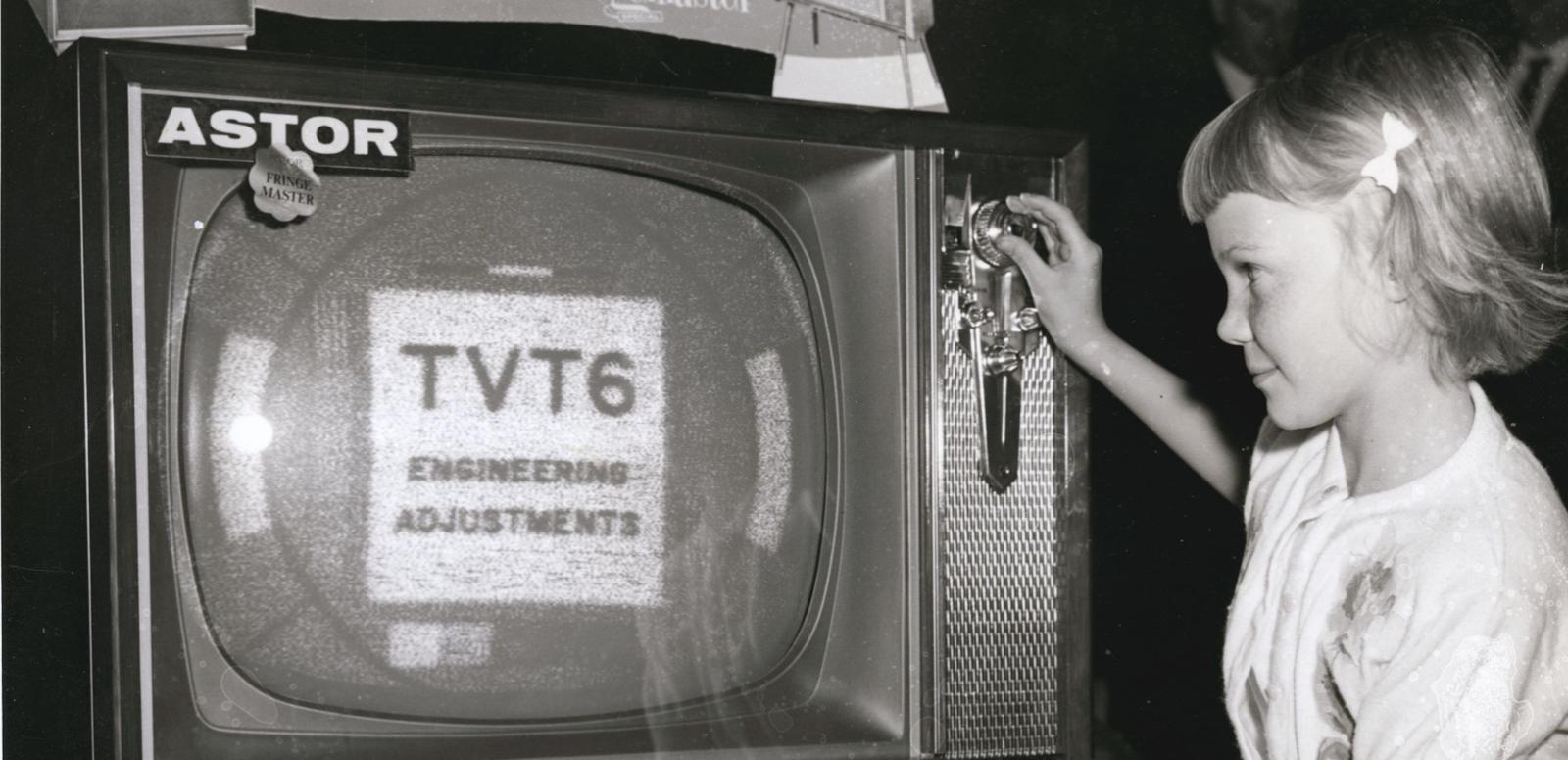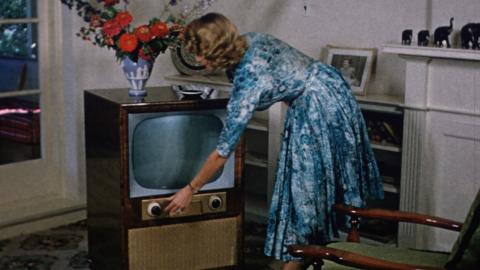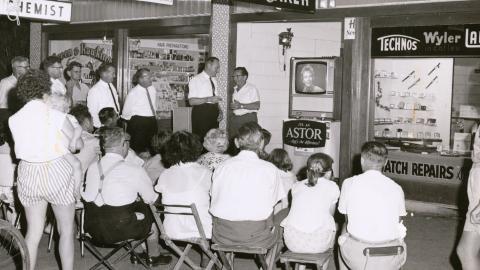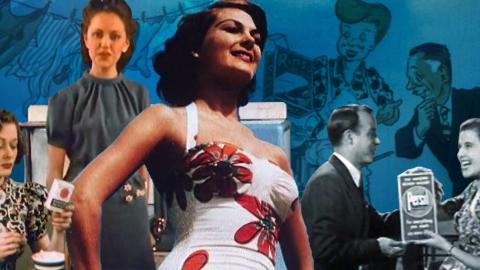

TV: Then and Now
The arrival of television (TV) changed daily life in Australia. TV brought together audio and vision, creating a uniquely powerful and influential form of mass media. While technology has evolved significantly, it remains almost impossible to imagine life without TV.
This digital excursion takes you back in time to 1956 when TV first arrived in Australia. Students will explore content from the NFSA collection, comparing how early TV sets looked and functioned to our experience of consuming TV media today and putting themselves in the shoes of a child in the past.
Activity outline
In this 30-minute digital excursion, students will explore the NFSA collection and reflect on the impact of the introduction of TV in Australia. Students will investigate changes to the technology and the consumption of TV, engage in drawing and discussion activities, and put themselves in the shoes of a child of the past as they explore the following key inquiry questions:
-
What was different about TV and how people consumed TV shows in the past?
-
How has TV as a medium changed since its arrival in Australia in 1956?
This digital excursion includes pre- and post-excursion activities in a downloadable PDF, which can be found here:
TV: Then and Now – pre and post-excursion activities
Once you have completed the excursion, we would be grateful if you could complete this short survey.
Additional information
Learning intention
-
Explore changes in the way people consumed television shows in the past and the way we consume television shows today
-
Understand that there are both similarities and differences between the past and today when it comes to this aspect of daily life.
Success criteria
-
Demonstrate an understanding of the broad changes to the way people consume television when comparing the 1950s to today
-
Explain how the introduction of television changed people's lives.
Australian Curriculum alignment
HASS Foundation
-
pose questions about familiar objects, people, places and events (AC9HSFS01)
-
share narratives and observations, using sources and terms about the past and places (AC9HSFS05)
HASS Year 1
-
continuity and change between aspects of their daily lives and their parents’ and grandparents’ childhoods (AC9HS1K02)
-
develop questions about objects, people, places and events in the past and present (AC9HS1S01)
-
interpret information and data from observations and provided sources, including the comparison of objects from the past and present (AC9HS1S03)
-
discuss perspectives related to objects, people, places and events (AC9HS1S04)
-
draw conclusions and make proposals (AC9HS1S05)
-
develop narratives and share observations using sources and subject-specific terms (AC9HS1S06)
HASS Year 2
-
how technological developments changed people’s lives at home and in the ways they worked, travelled and communicated (AC9HS2K02)
-
develop questions about objects, people, places and events in the past and present (AC9HS2S01)
-
collect, sort and record information and data from observations and from provided sources, including unscaled timelines and labelled maps or models (AC9HS2S02)
-
interpret information and data from observations and provided sources, including the comparison of objects from the past and present (AC9HS2S03)
-
discuss perspectives related to objects, people, places and events (AC9HS2S04)
-
draw conclusions and make proposals (AC9HS2S05)
-
develop narratives and share observations using sources and subject-specific terms (AC9HS2S06)
English Year 1
-
discuss different texts and identify some features that indicate their purposes (AC9E1LY01)
-
Use interaction skills, including turn-taking, speaking clearly, using active listening behaviours and responding to the contributions of others, and contributing ideas and questions (AC9E1LY02)
English Year 2
-
use interaction skills when engaging with topics, actively listening to others, receiving instructions and extending own ideas, speaking appropriately, expressing and responding to opinions, making statements and giving instructions (AC9E2LY02)
Design and Technology Years 1 and 2
-
identify how familiar products, services and environments are designed and produced by people to meet personal or local community needs and sustainability (AC9TDE2K01)
Main image: a child watches the TVT6 test broadcast in Launceston, 1960. NFSA title: 809741
The National Film and Sound Archive of Australia acknowledges Australia’s Aboriginal and Torres Strait Islander peoples as the Traditional Custodians of the land on which we work and live and gives respect to their Elders both past and present.


